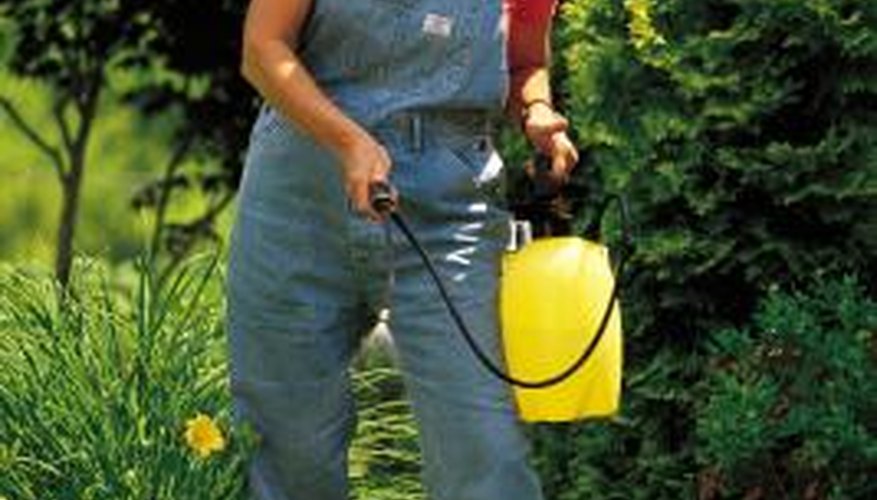Proper plant management in the yard and garden includes weed control. Weeds take vital nutrients from the soil, choke out desired plants, and encourage diseases and insect pests in the landscape. Weed killers, known as herbicides, prevent weeds in a yard, but have several disadvantages. In addition to the careful and proper use of weed killers, implement nonchemical weed control methods such as hoeing, mulching and pulling to obtain optimal results with minimal chemical application.
Plant Damage
Herbicides used over a large area easily damage other plants, especially on windy days or days with temperatures over 29.4 degrees C. Wind blows the chemical on to other plants, while high temperatures increase vapour drift, especially of broadleaved weed control chemicals. Non-selective weed killers represent a special concern, because they kill any plant with which they come in contact. Excessive weed killer application causes spreading of the chemicals to other areas in the landscape, potentially harming desired plants. Herbicide injury causes twisted stems, curling leaves, stunted development and distorted fruits and flowers. This damage often takes weeks to develop following weed killer exposure, making proper diagnosis unlikely in the home garden environment.
- Herbicides used over a large area easily damage other plants, especially on windy days or days with temperatures over 29.4 degrees C. Wind blows the chemical on to other plants, while high temperatures increase vapour drift, especially of broadleaved weed control chemicals.
Effectiveness
Chemical weed killers do not effectively control all types of weeds. Annual broadleaved weeds growing in the top 1 to 2 inches of soil respond well to herbicide application, while large-seeded varieties easily withstand these chemicals, according to Alabama Cooperative Extension System. This means that other control methods still remain necessary, even when weed killers have been applied.
Residue
Some herbicides remain on plants or in the soil for long periods of time. This may be ideal when trying to permanently eradicate all plant growth from a location, such as a patio area. This proves problematic however, in many landscaping or gardening situations, when gardeners wish to plant new grass, shrubs, or vegetables. Plant damage also occurs when treated plants with residue, such as lawn clippings, are used in the landscape for other purposes like mulching.
- Some herbicides remain on plants or in the soil for long periods of time.
- This proves problematic however, in many landscaping or gardening situations, when gardeners wish to plant new grass, shrubs, or vegetables.
Environmental Risks
Weed killer chemicals are toxic to frogs and other amphibians. Low-dose exposure to certain weed killers may increase the risk of certain health conditions in humans, including low sperm count, infertility and testicular cancer, according to a January 2010 article in Mother Earth News. Other weed killers, such as pelargonic acid, are naturally occurring components of plants commonly eaten by humans, making them safe for use, according to the United States Environmental Protection Agency. Weed killers are toxic if consumed by children or pets, so proper storage in inaccessible, locked areas is vital to ensure safety.
- Weed killer chemicals are toxic to frogs and other amphibians.
- Low-dose exposure to certain weed killers may increase the risk of certain health conditions in humans, including low sperm count, infertility and testicular cancer, according to a January 2010 article in Mother Earth News.
